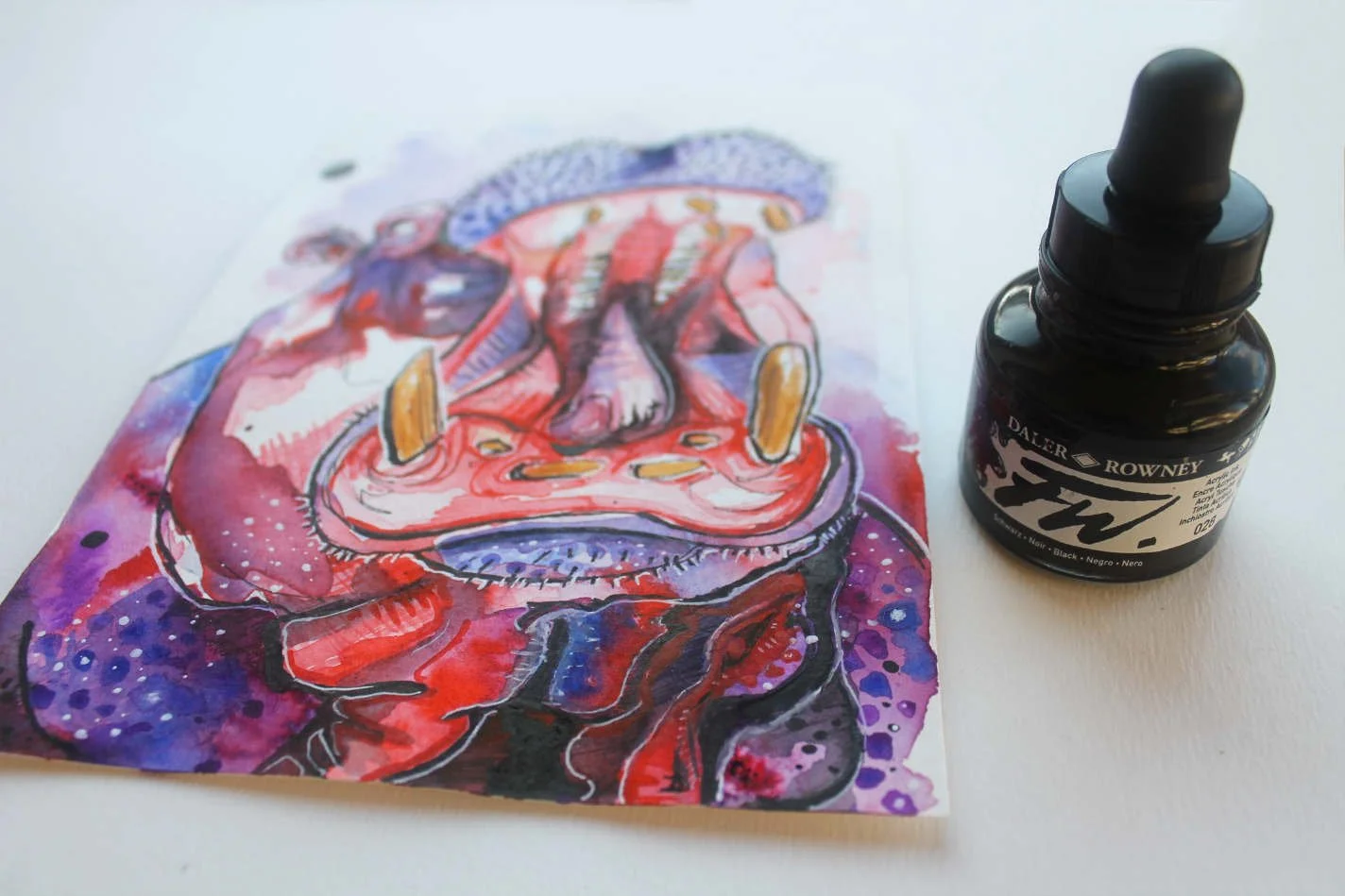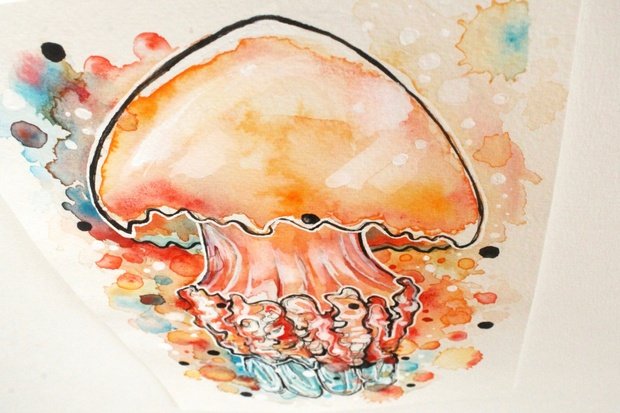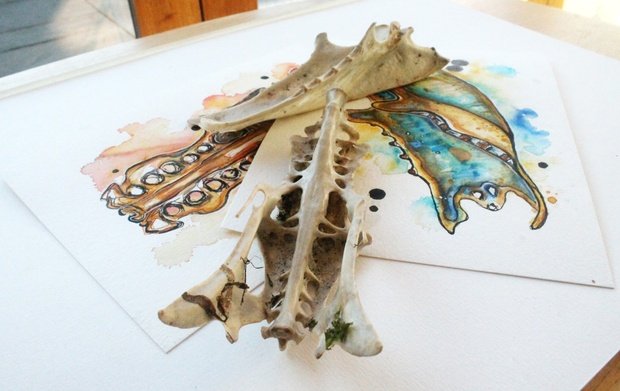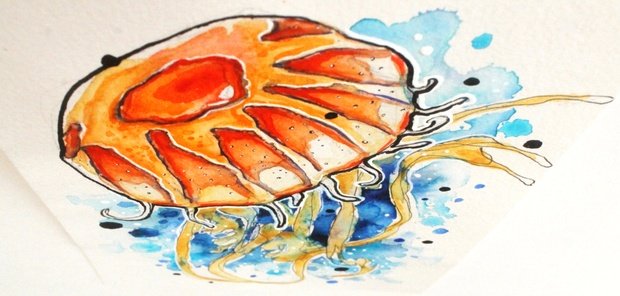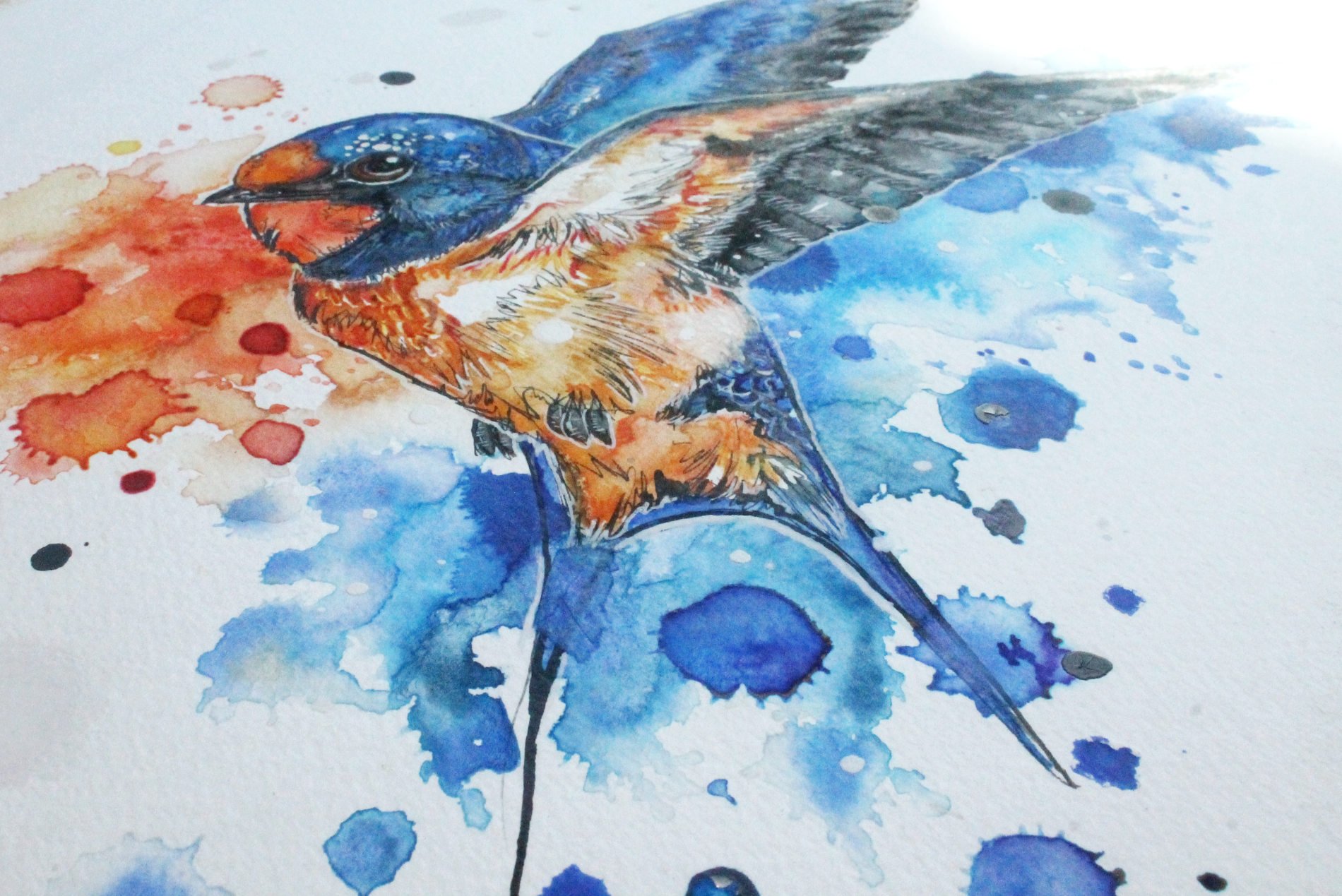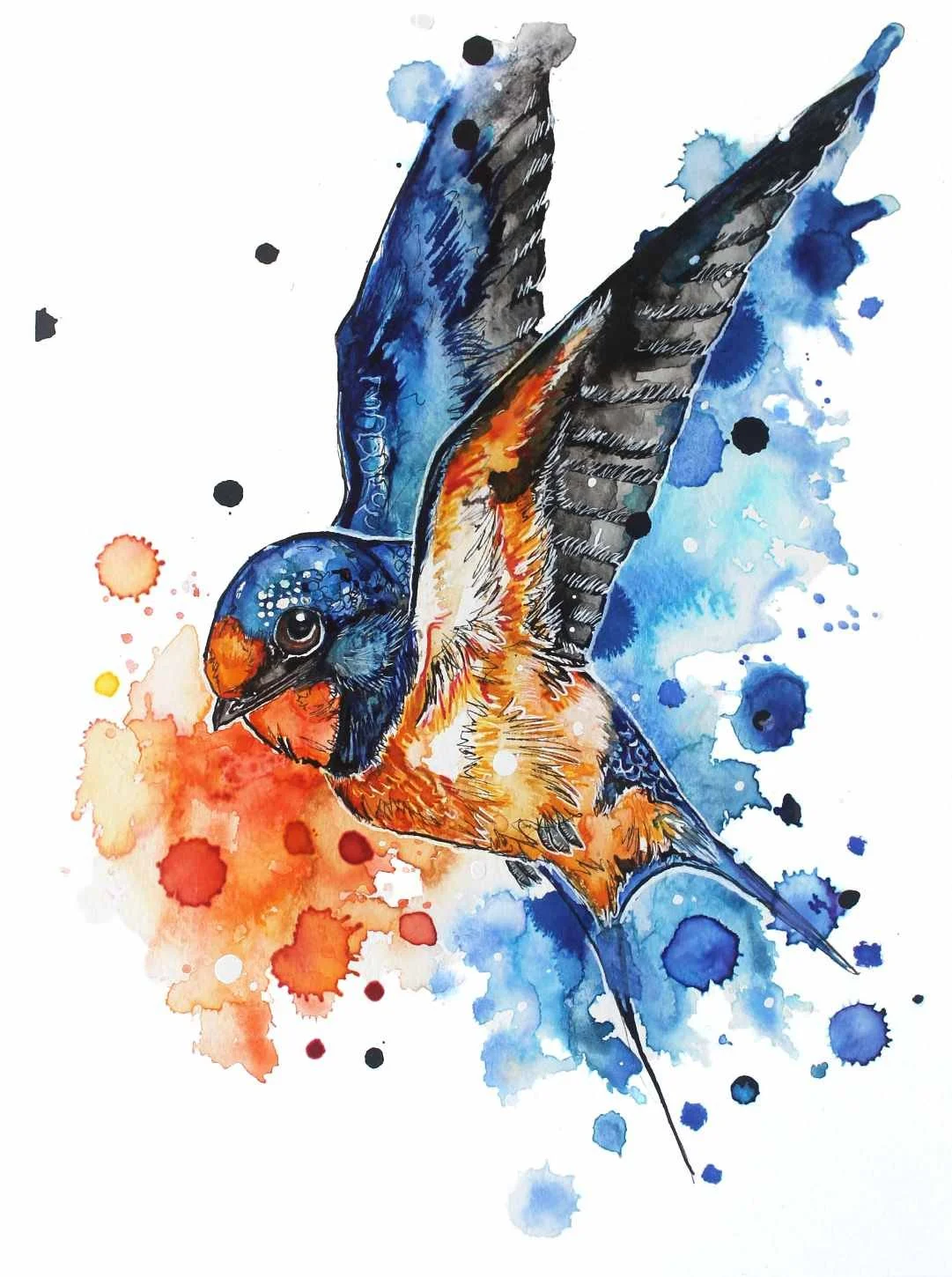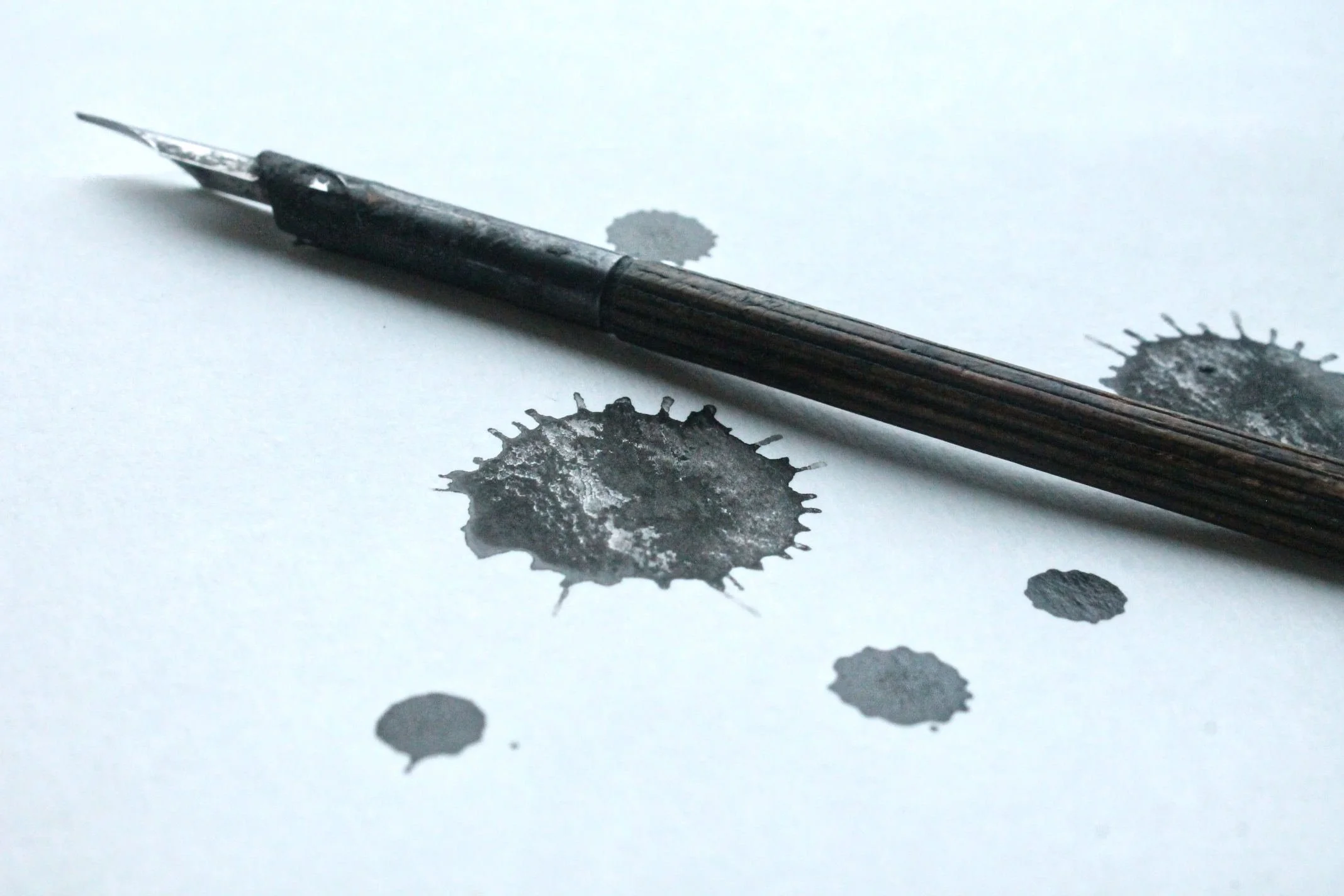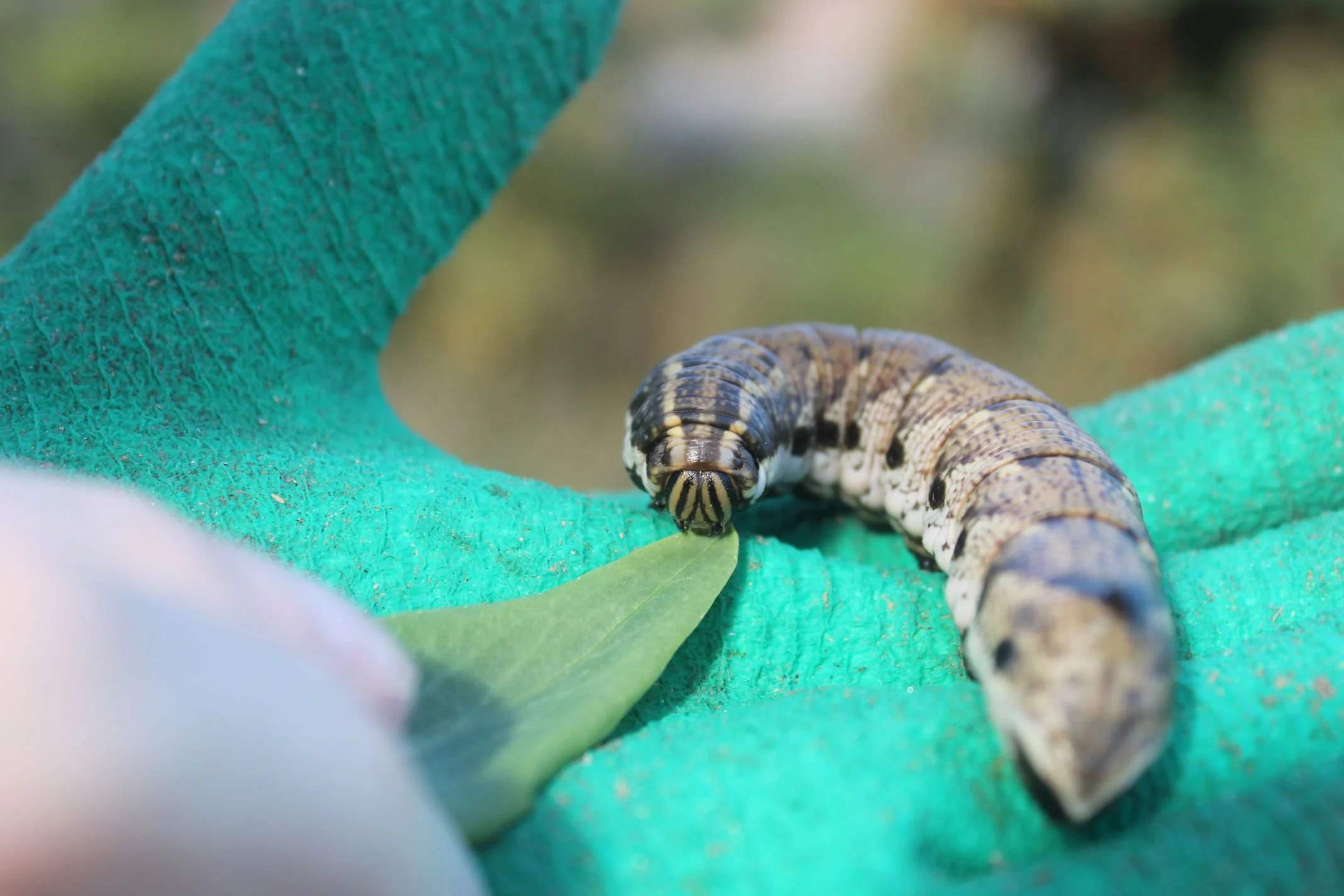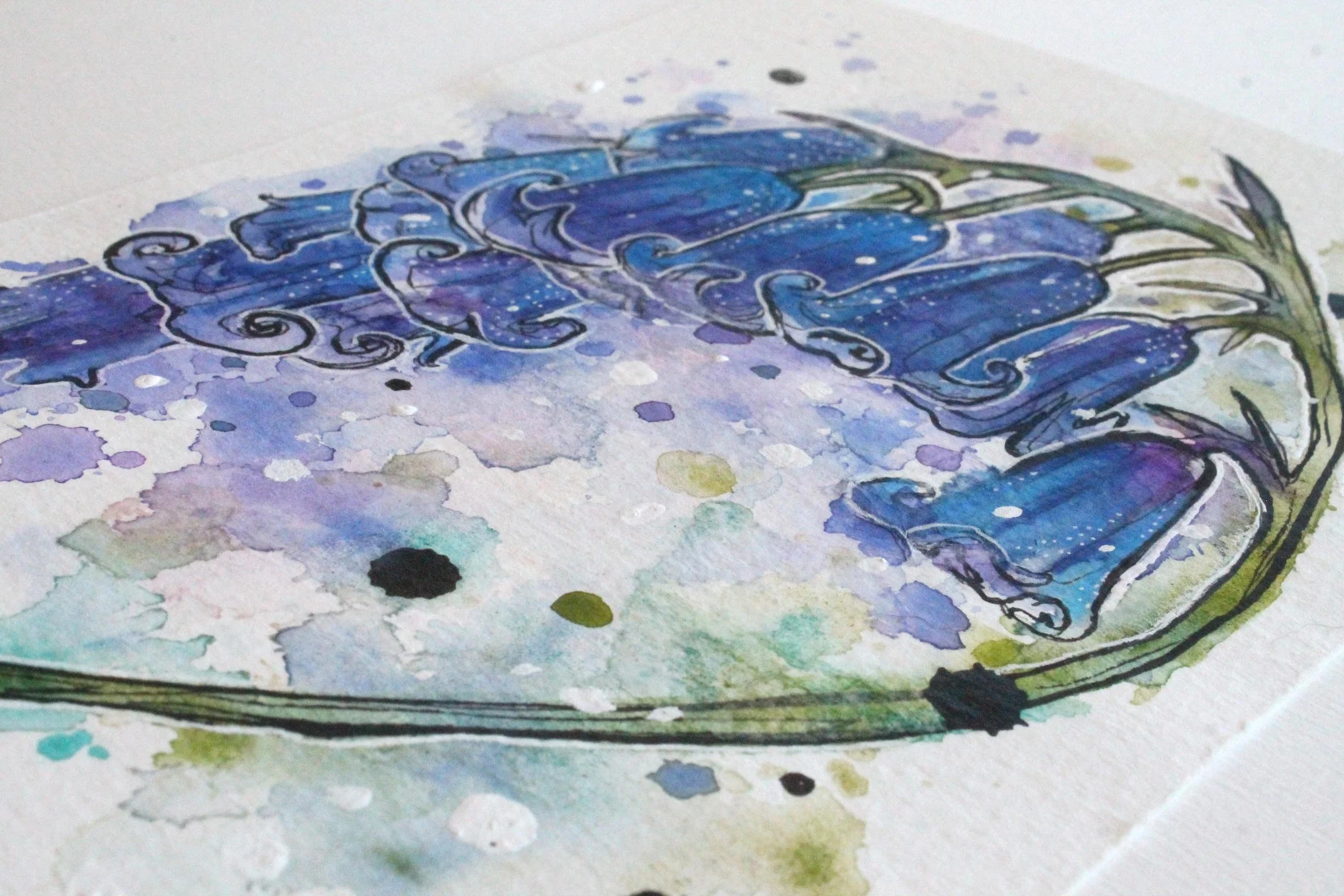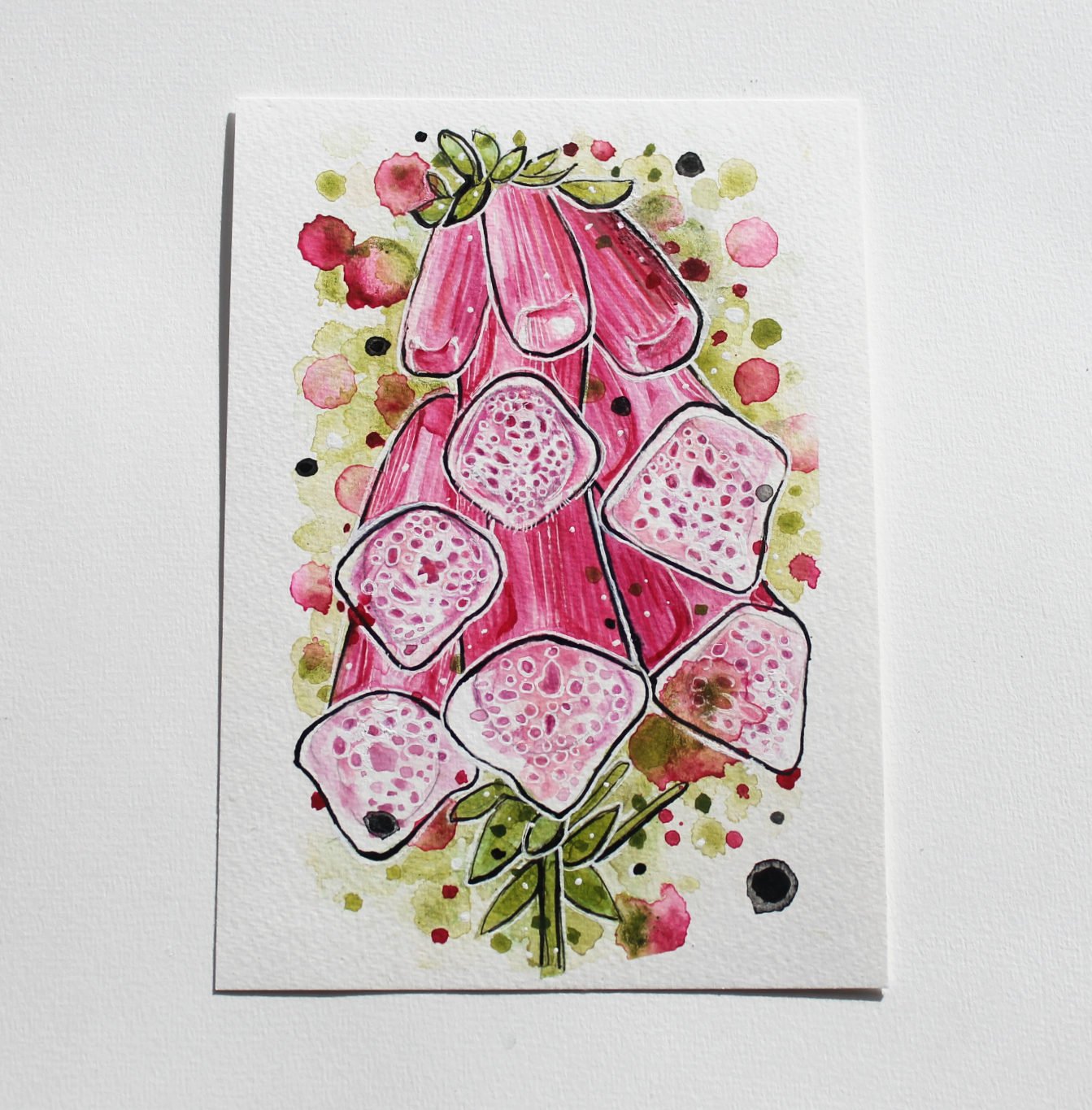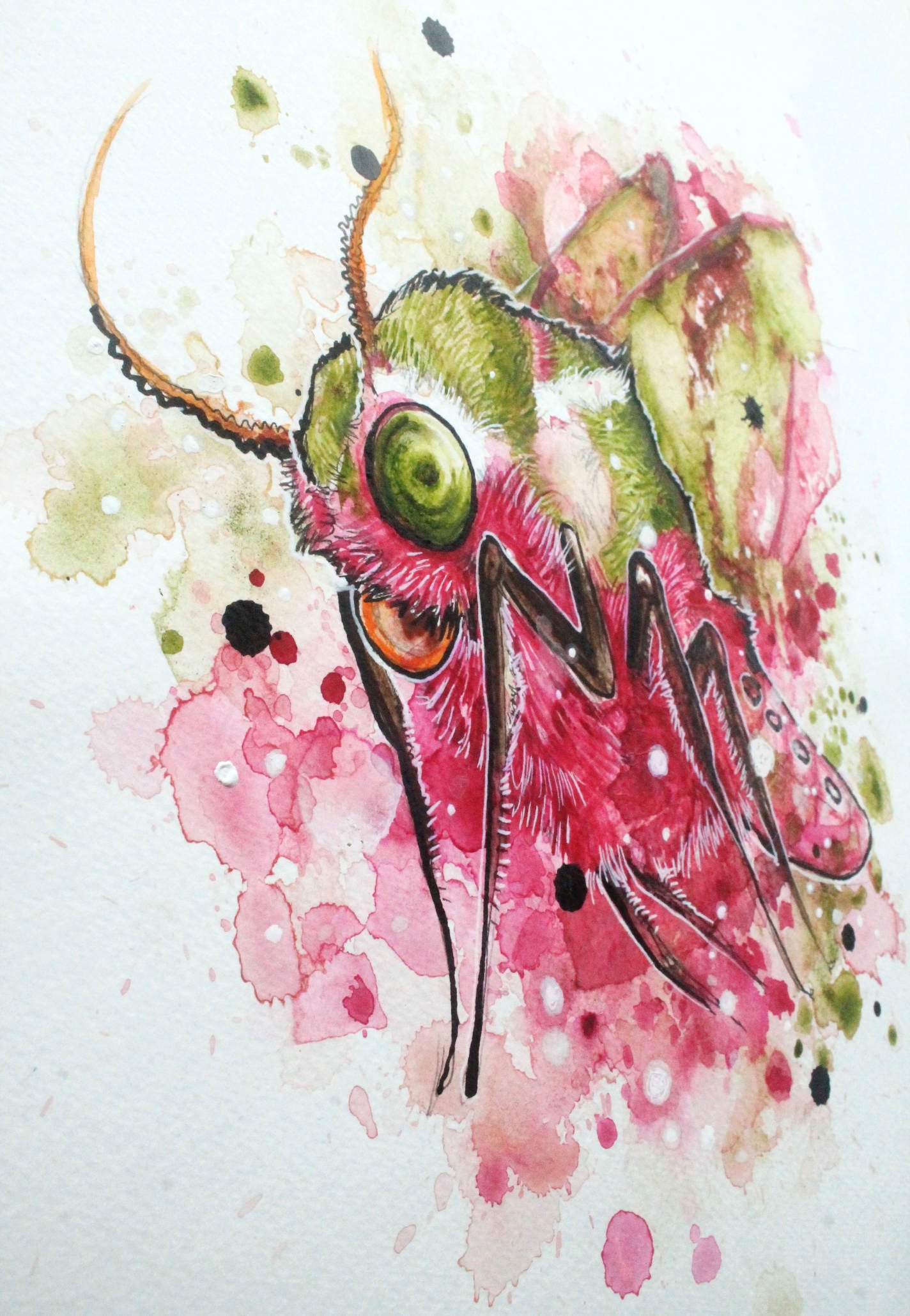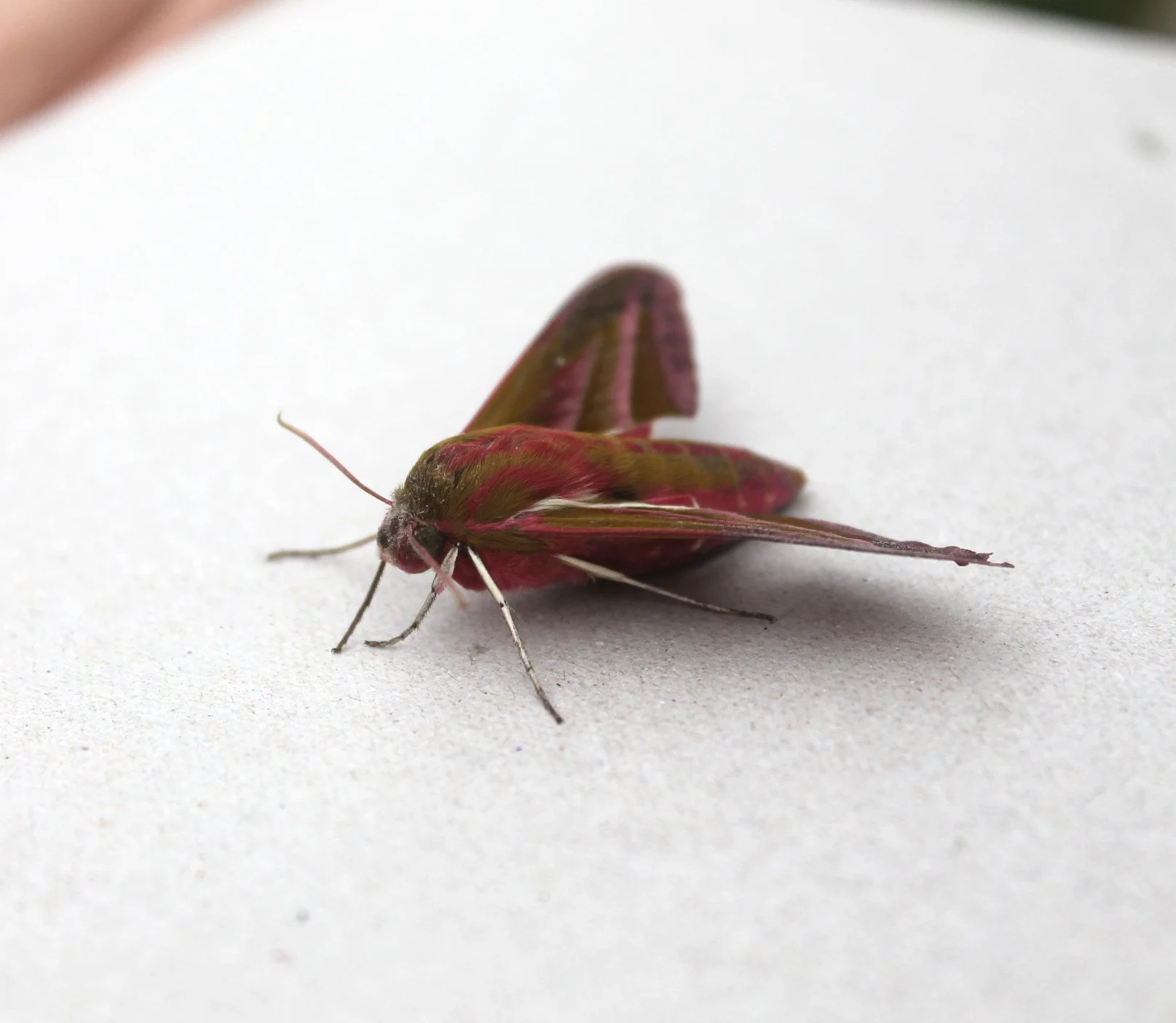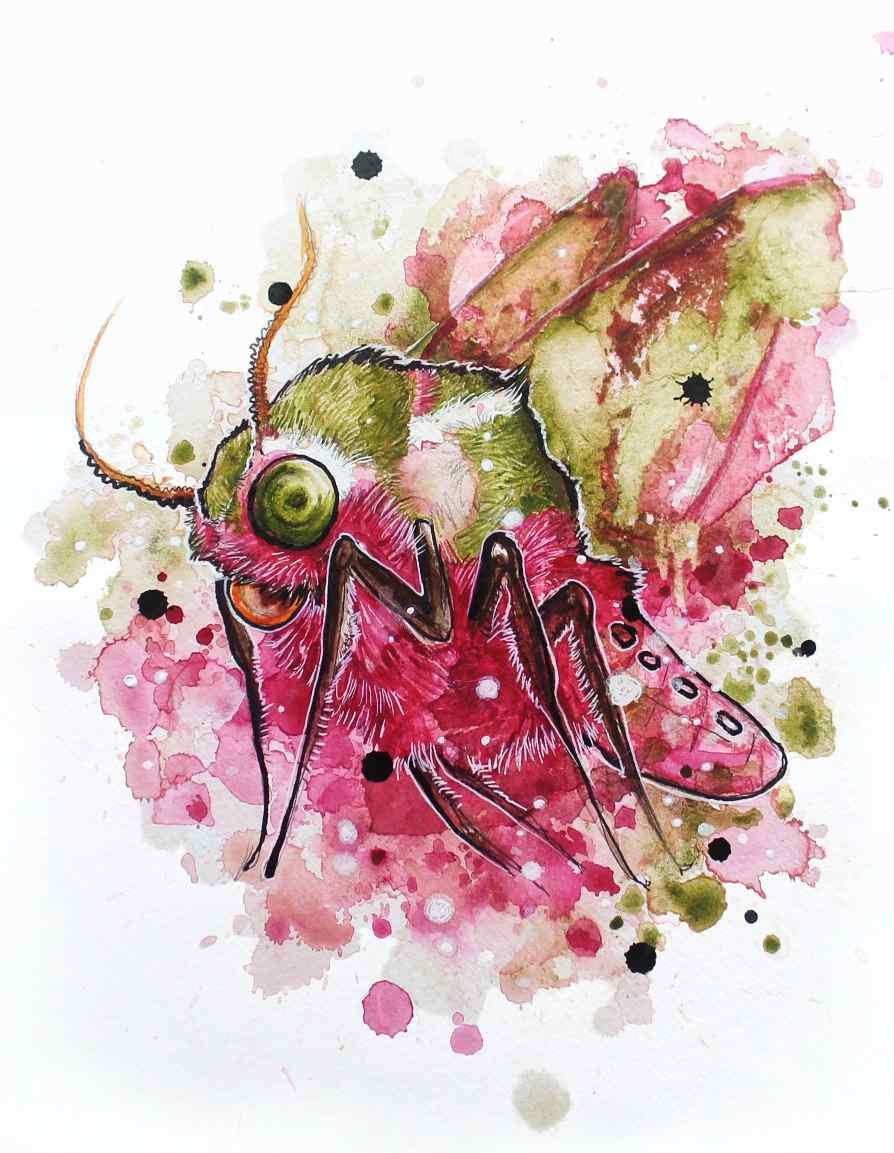My dad has a thing about hippos, I don’t really know why, and like most idolisations, I don’t think he can explain it either.
He wanted a handmade card for his birthday, so I was happy to hippo it up for him using these new inks I’m sweet on.
Since discovering my inks and in particular my beloved Indian ink wasn’t vegan friendly, I decided to find replacements. It thankfully didn’t take me long to find an almost identical alternative, Daler Rowney’s FW acrylic ink! It is silky smooth, glides across the paper, doesn’t clog my inking nibs and is literally a drop in replacement for Indian ink.
It even does that awesome texture when you apply it to soggy paper making grainy, spontaneous clouds just like Indian ink. I’m glad it wasn’t a time and purse consuming search. The FW white acrylic ink in the same range is very good too and would recommend it over using white gouache for “poppy” highlights.
I probably should add that I wasn’t sponsored by Daler Rowney or any brands on my entire website, it’s all my own fumbling on the internet to find products that I enjoy using.
Front and back covers of my dad’s birthday card, using Daler Rowney’s FW acrylic ink and Stuart Semple watercolours.
